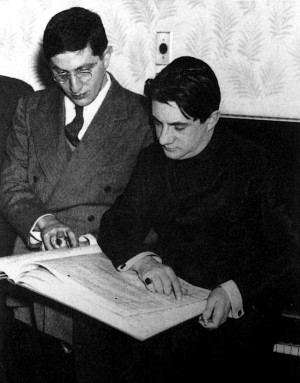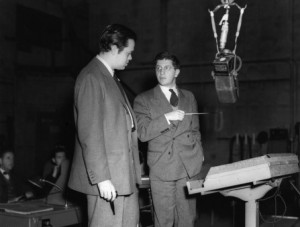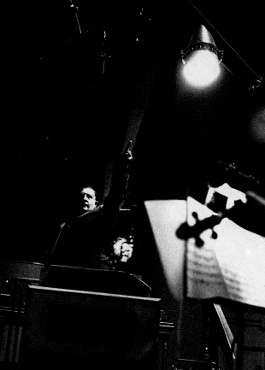Foreword
America has produced in the twentieth century many outstanding symphonic composers, but only one important music-dramatist: Bernard Herrmann. Whether he wrote music for a cantata, Moby Dick, or an opera, Wuthering Heights, or for any of his numerous films, a strong, explosive, individual and compelling dramatist shines through all of them.
For a while I worried that he spent too much time writing music for films, which after a short run disappear for ever – and the music with them. But a new period in his life proved that my concern was unfounded. He recorded nearly all of his important works on phonograph records, thus making them available to his countless admirers.
It is remarkable that this uncompromising individualist, who certainly did not belong to the clan of the Hollywood studio hacks, made such a splendid career there, at a place for which he never professed to have overwhelming love. From his very first film score on, he was acknowledged both by the producers and his colleagues as one of the outstanding figures of the Hollywood music scene and only when this Hollywood started to crumble away did he find it necessary to settle in his beloved England. As fate is often cruel, his last film was a Hollywood product and there, tragically, he died.
His untimely death ended the brilliant career of an important American composer and only his friends know that under a crusty and often forbidding facade a warm, friendly and generous heart was hiding. His humanity – a rare phenomenon in present day art – glows in every bar of his music, which is now here to make future generations happy.
Miklós Rózsa
Original foreword to Bernard Herrmann: Hollywood’s Music-Dramatist (Triad Press, 1977).
“As a composer I might class myself as a Neo-Romantic, inasmuch as I have always regarded music as a highly personal and emotional form of expression. I like to write music which takes its inspiration from poetry, art and nature. I do not care for purely decorative music. Although I am in sympathy with modern idioms, I abhor music which attempts nothing more than the illustration of a stylistic fad. And in using modern techniques, I have tried at all times to subjugate them to a larger idea or a grander human feeling.”
Bernard Herrmann
Bernard Herrmann – A Biographical Sketch
The death of Bernard Herrmann on Christmas Eve, 1975, in Hollywood, deprived the film and music worlds of one of their most outspoken, ebullient, colourful and talented personalities. The obituary in the American newspaper Variety (31 December 1975) described him as a composer and conductor who was ‘both hated and respected’ and it is true that his choleric personality and tough abrasiveness were not immediately endearing. Yet those friends and colleagues who did get to know him well were able to perceive beneath his rough exterior a loyal, kindly, emotional and often very amusing human being who was an unashamed romantic – or in the words of one who was close to him, ‘a toffee-apple, all crusty on the outside and soft on the inside’. He suffered few people gladly and, so the stories go, was capable of insulting most. In his later years he undoubtedly wished that his public conducting activities could have been more extensive but whether or not his irascible manner was a hindrance to his concert career remains for a future biographer to explore. What is not in dispute, however, was his excellence in the field of motion picture composition and in that field he was a master creator of the utmost brilliance and originality.
 Bernard Herrmann (“Benny” to his friends) was born in New York City on 29 June 1911 and his early education took place at the De Witt Clinton High School. His interest in music showed itself at an early age and he won a composition prize when he was thirteen. After graduating he went to New York University where he studied composition and orchestration under Philip James and Percy Grainger, and afterwards became a student at the Juilliard School of Music under Bernard Wagenaar and Albert Stoessel. While still a student he made his conducting debut on Broadway, where he directed a ballet he had composed for Shubert’s Americana Revue, and at the age of twenty he founded the New Chamber Orchestra with which he gave concerts of rarely heard music in New York and at the Library of Congress in Washington, D.C.
Bernard Herrmann (“Benny” to his friends) was born in New York City on 29 June 1911 and his early education took place at the De Witt Clinton High School. His interest in music showed itself at an early age and he won a composition prize when he was thirteen. After graduating he went to New York University where he studied composition and orchestration under Philip James and Percy Grainger, and afterwards became a student at the Juilliard School of Music under Bernard Wagenaar and Albert Stoessel. While still a student he made his conducting debut on Broadway, where he directed a ballet he had composed for Shubert’s Americana Revue, and at the age of twenty he founded the New Chamber Orchestra with which he gave concerts of rarely heard music in New York and at the Library of Congress in Washington, D.C.
Bernard Herrmann’s career took a professional turn when he went to work for the Columbia Broadcasting System in 1933. He started as composer, writing music for the Columbia Workshop radio programmes and in the following year he became first music adviser and later staff conductor at ‘The American School of the Air’, directing symphonic programmes in conjunction with other CBS conductors such as Howard Barlow and Victor Bay. Barlow had founded the Columbia Symphony Orchestra in 1927 and he introduced several of Herrmann’s works to radio audiences, including the first performance of the Nocturne and Scherzo in the 1936 summer season.
Herrmann himself soon made his mark on the CBS music programmes, which were broadcast under the titles Everybody’s Music, Invitation to Music, Exploring Music and so on. He felt strongly that since studio concerts did not have to be influenced by box-office considerations they could be planned in an unconventional way and feature rarely heard music, old and new, which could not be heard in public concert halls. In the 1936-37 season, for example, he presented a series of broadcasts entitled Music of Famous Amateurs in which he directed the works of notable royal personages, celebrated writers, famous painters and so on. One concert featured the music of Frederick the Great of Prussia; others featured the songs, motets and instrumental works of Richard I, Henry VIII, Charles I, Queen Hortense of Spain, and Louis XIII and Marie Antoinette of France. Other programmes contained the music of Frederick Nietzsche, Samuel Butler, John Milton and Samuel Pepys, whilst the broadcast of 1 December 1936 was given over entirely to Jean Jacques Rousseau’s opera Le Devin du Village.
An interesting series broadcast in the 1938-39 season was entitled Famous Musical Evenings. In this, Bernard Herrmann conducted the Columbia Concert Orchestra and a bevy of soloists in ‘reproductions of the kind of historical concerts which might have taken place in the various musical centres of Europe in the past’. An Evening at Vauxhall Gardens, An Evening with the Esterhazys, An Evening at the Court of Louis XV, An Evening at the Paris Opera, and An Evening at the Belaiev Symphony Concerts in St. Petersburg were typical titles. In an Eighteenth-Century Series he juxtaposed the named symphonies of Haydn (the Farewell, the Hen, the Schoolmaster, La Reine and so on) with the music of Locke, Arne, Gossec and Mancini. On another occasion he featured all the Concerti Grossi of Handel over a period of twelve weeks, programming them together with contemporary American compositions. One American composer whom Herrmann championed and befriended for many years was Charles Ives, many of whose works received their first performances under Benny’s direction. In fact, his enterprising advocacy of the living composer was a major facet of his conducting career and he was also responsible for having CBS commission new works from High School music students and conducting them over the air.
Always an ardent anglophile, Herrmann presented a great deal of English music on the CBS network, giving the American radio premieres of such works as Peter Warlock’s The Curlew, Vaughan Williams’s On Wenlock Edge, Delius’s Hassan in its entirety, and a complete performance of Purcell’s Dido and Aeneas, as well as a great many compositions by Josef Holbrooke, Cecil Gray, Cyril Scott, Lord Berners, Arnold Bax and Bernard van Dieren.
In 1940, Bernard Herrmann became Conductor-in-Chief of the Columbia Symphony Orchestra and in this capacity, notes Baker’s Musical Dictionary, he was ‘probably responsible for introducing more new works to American radio audiences than any other conductor’ , including (to name but a mere handful) the American broadcast premieres of Miaskovsky’s Twenty-Second Symphony (1941), Moeran’s Symphony in G minor (1943), Richard Arnell’s Symphony No. 1 (1944), Malipiero’s Symphony No. 3 (1945), Charles Ives’s Symphony No. 3 (1946), and Edmund Rubbra’s Symphony No. 3 (1947). His enterprising and varied concert programmes frequently reflected his taste for light, frothy French music as well as the neglected works of the great Romantics, and he often conducted the symphonies and symphonic poems of Goetz, Raff, Gretchaninov, Gade and Liszt, in broadcasts which also featured such celebrated soloists as Eileen Farrell, Joseph Szigeti and Wanda Landowska.
By 1948 he had already received several outstanding American musical awards and grants, including the Henry Hadley Citation (‘for unusual programmes which adroitly avoid the cliché’), the George Foster Peabody Citation (‘for bringing to the radio compositions and composers who deserve but might not otherwise have received a hearing’) and the thousand-dollar American Design Award (‘for spreading a wider knowledge and appreciation of the world’s music’). He had also earned a not uncritical chapter to himself in David Ewen’s Dictators of the Baton in which the author commented on Herrmann’s ‘lack of attention to detail’ in his interpretations. However, David Ewen concluded: ‘Whatever his faults as a conductor may be, it cannot be denied that he is a splendid musician, that he has an enthusiasm for his “métier” which is found contagiously in his performances, and that with his detestation of the stereotyped he has been one of the most invigorating influences in the radio music of the past two decades’.
Although he was busy championing the music of others, he did not neglect his own composing career and by the late 1940s several of his concert works had received notable performances. Sir John Barbirolli had conducted Bernard Herrmann’s Cantata Moby Dick with the New York Philharmonic Orchestra on 11 April 1940, the first most important Herrmann “premiere”. His Symphony was performed by the same orchestra under Howard Barlow in 1942 and that same year Sir Thomas Beecham conducted the CBS Symphony Orchestra in the suite Welles Raises Kane. The Devil and Daniel Webster Suite was given its concert premiere by Eugene Ormandy and the Philadelphia Orchestra in 1944 and was taken up a few years later (1949) by Leopold Stokowski and the New York Philharmonic. Herrmann himself, of course, had introduced several of his own concert works to CBS radio audiences as well as in public guest appearances with the New York Philharmonic, who gave the first performance of his Berceuse For the Fallen in 1943.
After the war, Herrmann made many guest appearances in British concert halls and conducted several radio broadcasts, including a BBC Symphony Orchestra concert in 1946 (Diamond’s Round for Strings, Rubbra’s Third Symphony, the Prelude and Fugue from Ives’s Fourth Symphony, and his own Devil and Daniel Webster) and a Hallé Orchestra Concert in 1949 which featured Liszt’s Faust Symphony. In 1950 he completed work on his most ambitious composition, the windswept lyric-drama Wuthering Heights. This was a project which had occupied him for three years and reflected his wide literary tastes, for he was exceptionally well-read, as befitted an avid collector of first editions.
In 1951 after the CBS Symphony Orchestra was disbanded, he began to spend much more time in England (where he eventually settled), and continued his guest-conducting activities with several of the major orchestras in the concert hall and on the radio. In 1956 he conducted the London Symphony Orchestra in two broadcasts, one featuring Rubbra’s Sixth Symphony, Walter Piston’s Violin Concerto, Aaron Copland’s Red Pony Suite, and his own For the Fallen, whilst the other included the British premiere of Ives’s Second Symphony and Elgar’s Falstaff, a particular Herrmann favourite and one which he considered to be Elgar’s ‘supreme orchestral work’.
He also made several appearances in London where the present writer saw him conduct for the first time on 13 March 1961, in a London Symphony Orchestra concert at the Royal Festival Hall featuring Haydn’s Symphony No 61, Beethoven’s Third Piano Concerto (with Julius Katchen as soloist) and the Dvorak New World Symphony. Beecham had just died and Herrmann paid tribute with a brief speech from the rostrum and a moving performance of Delius’s Walk to the Paradise Garden.
As time went on his public appearances became less frequent (his radio and television appearances usually being confined to interviews) and his last concert took place at the Theatre Royal, Drury Lane, on 21 April 1974 when he conducted the Royal Philharmonic Orchestra in a Byron Commemoration Concert consisting of Berlioz’s Harold in Italy, Liszt’s Tasso, Richard Arnell‘s Symphonic Portrait Byron and the first performance of Elizabeth Maconchy’s Isles of Greece. Bernard Herrmann was never considered a great conductor from the point of view of baton technique and profundity of interpretation, but he was a good musician who knew what he wanted and he was capable of obtaining very satisfactory results from any responsive orchestra.
It remains to be seen whether any of Bernard Herrmann’s concert works establish themselves in the regular repertoire now that he is no longer with us to conduct them in person. It would certainly be enterprising of any choral society, for example, to replace one of the “top three” modern choral works (Alexander Nevsky, Carmina Burana and Belshazzar’s Feast) with Herrmann’s Moby Dick Cantata as a change from the usual fare. His Symphony, too, has yet to receive its first British concert performance and despite its eclecticism could be programmed most effectively as an alternative to more frequently performed American compositions. Occasionally his works have been taken up by others in recent years — he was much moved by Stokowski’s performance of For the Fallen with the American Symphony Orchestra in 1969, and he would have been delighted with Elmer Bernstein’s superlative account of The Devil and Daniel Webster in an all-American concert given by the Royal Philharmonic Orchestra in London on 5 July 1976. But that score, like several of Herrmann’s concert works, does derive from film music and there is no doubt that it was in this sphere of composition that he was at his best.
He was introduced to the world of motion picture music by Orson Welles, the “enfant terrible” of American radio, for whose Mercury Theatre Playhouse Herrmann had written background scores in his early CBS days. Welles had terrified half America with his radio adaptation of H G Wells’ War of the Worlds in 1938 and when he moved from broadcasting to the cinema he took his Mercury Theatre colleagues with him and made Citizen Kane, a film considered by many to be the greatest motion picture to have come out of the United States. This was Bernard Herrmann’s first film music assignment and it set him on a second career which he was to pursue to the very end of his life.
He wrote the scores for nearly fifty motion pictures and in doing so undoubtedly aspired to the view once expressed by Constant Lambert: ‘Film music offers the serious composer what has been lacking since the eighteenth-century – a reasonable commercial outlet for his activities, comparable to the “occasional” music which the greatest classical composers did not despise to write. How familiar is the spectacle of a composer endowed with technical facility and good taste, but with little originality, wasting his time in an effort to be a latter-day Beethoven. Yet these same gifts employed in a film studio might produce results of the utmost value’. As it happened, Herrmann was in good company because in addition to the contemporary classical composers who wrote very fine music for the movies (Shostakovich, Prokofiev, Bliss, Walton, Vaughan Williams, Copland and so on) early film scores had also been composed by such famous musicians as Saint-Saens, Mascagni, Milhaud, Gottschalk, Honegger, Satie, Sibelius, Ibert, Hindemith and Holst, to name just a few whom Herrmann himself particularly admired.
Interesting light is thrown onto the world of film music creation by the statement in Tony Thomas’s Music for the Movies that Herrmann was ‘the only major film composer in Hollywood’ who did his own orchestrations. It seems that the film composer is under such pressure to produce his scores quickly that he engages professional orchestrators to work from his two-stave drafts. Perhaps it is the fact that Herrmann was himself such a superb orchestrator, always having the “colour” of the sound uppermost in his mind that set him apart from his colleagues. At any rate, his uncanny knack of complementing exactly the mood of a film, of employing highly original musical techniques and of avoiding, even in his most romantic scores, the gushing sentimentality which has often given film music a bad name – these and many other talents contributed to his reputation as an outstanding cinema artist.
He did not always think it necessary to use conventional forces for his film scores and would frequently employ exotic or rare instruments, or unusual combinations of familiar ones. He used these methods right from the beginning, with Citizen Kane. He wrote in the New York Times in 1941: ‘In orchestrating the picture I avoided, as much as possible, the realistic sound of a large symphony orchestra. The motion picture soundtrack is an exquisitely sensitive medium, and with skillful engineering a simple bass flute solo, the pulsing of a bass drum, or the sound of muted horns, can often be more effective than half a hundred musicians sawing away. Save for the opera sequence, some of the ballet montages, and a portion of the final scene, most of the cues were orchestrated for unorthodox instrumental combinations’.
His score for The Devil and Daniel Webster (which won him an Academy Award in 1941) used a mixture of rustic barnyard style music and advanced electronic effects. ‘When the devil plays at a barn dance, we superimposed four violin tracks on top of each other. And we had another effect which we got from recording the sound of “singing” telephone wires at 4 o’clock in the morning. It was always used when the devil (Walter Huston) appeared’ (Interview with Ted Gilling, Sight and Sound, Winter 1971/72).
In other films, Herrmann combined his colouristic effects with characteristic harmonies, insistent rhythms, certain personal melodic lines and chord sequences, until after but a few hearings of his film scores a definite thematic pattern emerges between one film and another, with each having its own distinctive Herrmann “sound”. His score for Anna and the King of Siam utilized authentic Siamese music, whilst that for White Witch Doctor was based on the pentatonic scale. The Day the Earth Stood Still – an early science-fiction movie – had the eerie sounds of theremins, electric violins, electronic basses and electronic guitars. Beneath the Twelve Mile Reef featured nine harps; On Dangerous Ground employed eight French horns in a set piece entitled The Death Hunt which John Amis, in his radio tribute to Benny (Music Now, BBC Radio 3, 30 January 1976), described as ‘the twentieth century equivalent of Le Chasseur Maudit’. Journey to the Centre of the Earth utilised five organs – one cathedral, four electronic; Jason and the Argonauts found Herrmann making use of ancient Greek modes in an orchestra of winds, brass and percussion – no strings at all, whilst Fahrenheit 451 had strings, harps and percussion but no winds or brass.
One of the most notable director/composer collaborations in the history of the cinema, ranking with the Eisenstein/Prokofiev and Olivier/Walton partnerships, began in 1955 when Bernard Herrmann wrote the score for The Trouble with Harry, the first of several Alfred Hitchcock films on which he was to work. Stories are legion that Herrmann had insulted practically everybody in Hollywood (‘Why do you show me this garbage?’ he would rail at some unfortunate producer whilst stalking out of the projection room) but his first assignment on a Hitchcock film seems to have got the collaboration off to a good start. He enjoyed working on this “black comedy” and fashioned a humorous concert suite from the score in tribute to the director, calling it A Portrait of Hitch. His second Hitchcock film was a splendid remake of The Man Who Knew Too Much and is especially interesting for Herrmann’s only screen appearance (‘My big commercial’ as he called it). This occurs in the famous Albert Hall sequence marking the film’s climax in which a foreign dignitary is due to be shot during a public concert at precisely the same moment as a mighty cymbal clash rings out. For this scene, which featured the London Symphony Orchestra and chorus, Herrmann used Arthur Benjamin’s Storm Clouds Cantata, the same music which had been heard in Hitchcock’s earlier version of the story in 1934.
Quite the most celebrated of Herrmann’s film scores, however, is the one he wrote for Hitchcock’s Psycho in 1960. Using a large string orchestra and employing every trick in the string-player’s book – macabre pizzicatos, eerie tremolos, weird harmonics, and so on – he complemented the hard black-and-white image with a similarly monochrome score. For the first half of the film nothing much happens beyond a girl absconding with forty-thousand dollars – yet Herrmann’s stark, jagged music, so redolent of Bartok and Stravinsky, is sufficient to grip the spectators in their seats, filling them with a nightmarish apprehension of the terror to come. Interestingly, this film demonstrates Bernard Herrmann’s uncanny genius at knowing exactly when not to use music on the soundtrack. Thus the shower murder with its frenzied bird-like shrieks from the violins in their upper registers is all the more effective for coming after a very long scene between Marion (Janet Leigh) and Norman (Anthony Perkins) in which there is virtually no music at all.
Throughout Psycho, there are marvellous touches where Herrmann brings in his music “in tempo” with the visual action or sound effects, such as the scene where the cop in dark glasses climbs back into his car after questioning Marion and turns on his motor. One downbeat later the terrifying “flight” music of the prelude returns – with sensational effect. Hitchcock has claimed in recent years that Psycho was a “black comedy” – a pronouncement totally at odds with the publicity campaign which surrounded the film on its initial release, and indeed with the film itself. Nor is there anything in Herrmann’s music score to suggest any kind of macabre humour (as there was in The Trouble with Harry) and the conclusion has to be drawn that Hitchcock is having the last laugh on his audience. After all, he had done it before in Stage Fright (1950) with a phoney flashback and he did it again in Psycho with a phoney soundtrack device: Norman’s mother’s voice, which we hear several times in the film, is plainly that of an actress and not, as we are told at the end, Norman himself doing an impersonation!
Bernard Herrmann’s break with Hitchcock came after Marnie owing to the studio’s insistence that in common with the then-current vogue in film music, all movies should have a hit-parade “pop” theme to help sell the picture. Herrmann demurred and other composers were brought in to provide the scores for all subsequent Hitchcock films. As it happens, these scores seem not to have matched Bernard Herrmann’s for memorability, nor were they especially helpful in box-office terms. (It is interesting that Herrmann did in fact write a score for Hitchcock’s Torn Curtain which remained unused and before he died he announced his intention of recording it for commercial release along with another famous “unused” film score, that written by Sir William Walton for The Battle of Britain).
The lucrative profession of writing music for the movies undoubtedly helped to finance the recording of Wuthering Heights which Bernard Herrmann undertook in 1966 and which began yet another phase in his career – a considerable amount of work in the recording studios. It is a pity that he had not made any records during his early days at CBS – the 78 rpm discs which were made by the CBS Symphony Orchestra were all conducted by Howard Barlow. Tapes and acetates which have survived of early Herrmann concerts provide evidence of a fine orchestra and some excellent performances. When he did finally embark on a recording career in the late 1960s he was able to bequeath a considerable legacy of his own music and to indulge his own tastes in recording the music of other composers which he especially liked. Although a much-mellowed man in these last years he was still capable of directing his wrath at some unfortunate musician from time to time. On one occasion he rounded on the string section for not using enough bow in a fortissimo climax: ‘Where do you guys think you are – in a telephone kiosk?’ On another occasion there was some confusion over an intended ritardando at the end of a particular piece: ‘What the hell do I have to do? Put it in neon?’.
By and large, he was very well served by the recording companies but critical reaction to many of his records has been the usual mixture of good and bad accorded to any recording artist. It has to be admitted that in his last years there was an occasional slowing down of tempi which in former performances might well have been considerably faster. The Penguin Stereo Record Guide (1975) notes, for example, that his recording of The Planets suffers from ‘unconventionally slow tempi and surprisingly slack playing’. On the other hand, it is in those fields where his records have little or no direct competition that critical reaction has been the most favourable. The same volume considers that Moby Dick receives ‘an extremely dramatic and spontaneous performance which should recommend it to any listener who can enjoy a setting of the English language by a composer who shows a real feeling for words …the chorus and orchestra convey their enthusiasm in effective and rewarding music. Outstandingly good recording to match the vigour of the performance’. From the same authors comes this appraisal of Wuthering Heights: ‘Though the writing is purely illustrative rather than musically original, this performance, strongly conducted by the composer, makes for a colourful telling of the story. The solo singing is consistently good and the recording is beautifully clear… Perhaps the whole opera is too civilised to represent stark Bronte emotions, but it is good to have a complete recording of an ambitious modern opera, as yet unstaged’.
In the February 1976 issue of High Fidelity, Royal S. Brown reviewed the Unicorn recording of Bernard Herrmann’s Symphony: ‘It unfolds expansively in the form of a multi- contoured, moody, often bleak tonal landscape… It is saddening that a work of this quality has remained virtually unknown for over thirty years, but there is some consolation in the delight of rediscovery’. Herrmann’s film music, too, always received good notices. Edward Greenfield reviewed the Psycho score in the February 1976 Gramophone: ‘Hearing this record goes a long way towards explaining Herrmann’s mastery of the medium. Musically, most of his ideas are tellingly simple, often not really melodic at all, and he presents them in clean textures and finely judged instrumentation’. The Phase Four recordings of his film music are outstanding in every way, not least in the sound quality afforded by the engineers. In particular, his concert suite of music from The Three Worlds of Gulliver – a delightful pastiche on eighteenth century themes – is quite one of the most enjoyable scores he ever wrote and is scintillatingly recorded, whilst his championship of other composers’ film music (notably Shostakovich’s Hamlet and Constant Lambert’s Anna Karenina) is rewarded by excellent recorded performances.
As an advocate of the lesser-known major works of infrequently performed composers, he must have been particularly pleased at the reception afforded to his recording of Raff’s Lenore Symphony, since the whole project had been very dear to his heart. In January 1971 Basil Ashmore wrote for Hi Fi News and Record Review: ‘Unicorn’s catalogue of musical treasure trove is certainly enhanced by this excellent performance of a work that is by no means inferior to Tchaikovsky’s Manfred or Liszt’s Faust Symphony… The conductor understands the Gothic style and does Raff as proud as Beecham might have done’. That same month, Geoffrey Crankshaw wrote in Records and Recording: ‘For ages now, I have been hoping to hear once again Raff’s Lenore, which I recall hearing many years ago in a BBC broadcast. Well, miracle of miracles, here it is in as magnificent a recording as anyone could wish for… the whole work is replete with vitality and Bernard Herrmann conducts it with immense zest, giving it a tremendous performance which is matched by superb recording’.
His recording of Ives’s Symphony No. 2, too, was highly praised: ‘So carefully detailed is Herrmann’s performance – with microphoning to match – that one could virtually copy the notes back onto the score paper simply from a hearing of this recording. The high point of Herrmann’s reading is the final Allegro with its collage of old American country dance tunes, working towards a climax of Columbia, Gem of the Ocean and Reveille, and ending as a splendid and fully orchestrated barbaric yawp. Herrmann’s (and the Phase Four engineers’) delineation of the counterpoints from the beginning to the end of this movement would be the envy of a New England stitchery expert’ (David Hall, Stereo Review, November 1972).
The last year of Bernard Herrmann’s life saw other musicians taking an interest in the recording of his film music. The Classic Film Scores of Bernard Herrmann on RCA elicited this response from Royal S. Brown in High Fidelity: ‘I must say that a great deal of my enthusiasm for the music on this disc is inspired by Charles Gerhardt’s almost unbelievably intense and exhilarating interpretations. Very simply these are some of the most captivating performances of film music I have ever heard’. Similarly, in the March 1976 issue, the same writer commented on the recording of music from The Ghost and Mrs. Muir: ‘Here one has the chance to appreciate the exquisite subtlety of a master orchestrator. In addition to the lovely transparency created by the frequent wind-and-harps combinations, the score is filled with unexpected, emotion striking shifts in instrumentation. It contains some strikingly
beautiful melodies and I was greatly impressed both by Elmer Bernstein’s interpretations and by the airily spacious and clear recorded sound’.
Bernard Herrmann once remarked: ‘The twenty-first century won’t be interested in our painting, our literature or our architecture so much as in our motion pictures, because the motion picture is the first truly original art form of the twentieth century. Real composers welcome any opportunity to write music and any composer who disdains writing music for films, radio or television, or any other medium, is doomed to oblivion’.
As recognition of his fine work continues to grow, it is clear that Bernard Herrmann made an important contribution to a major art form and his own name will certainly loom large in the assessment of motion picture composition, ensuring him an important and deserving place in its history.
Copyright © 1977-2011 by Edward Johnson

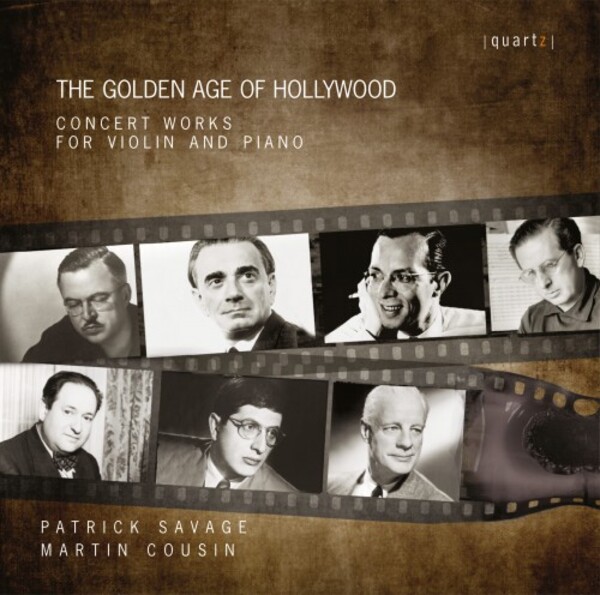
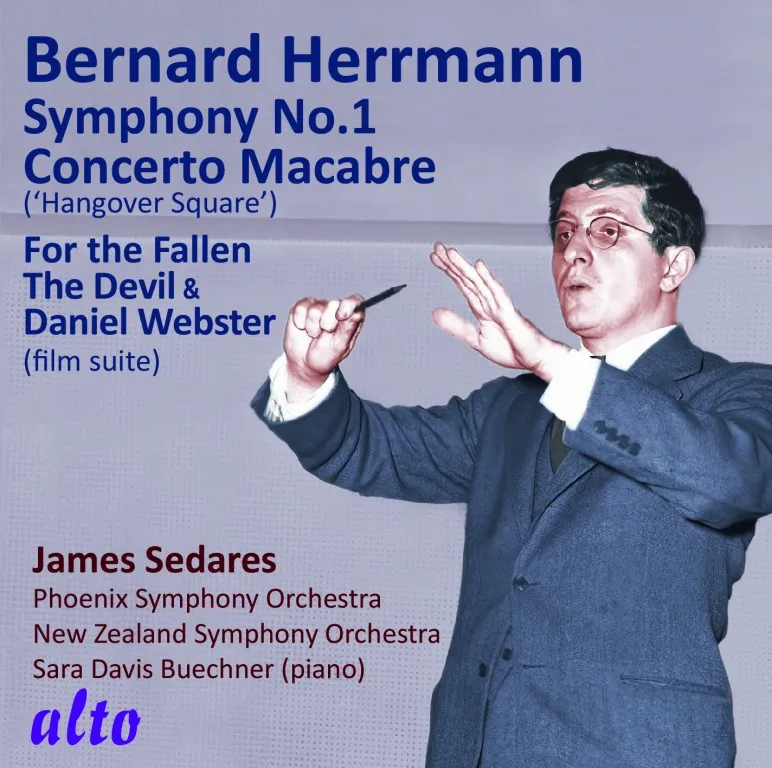
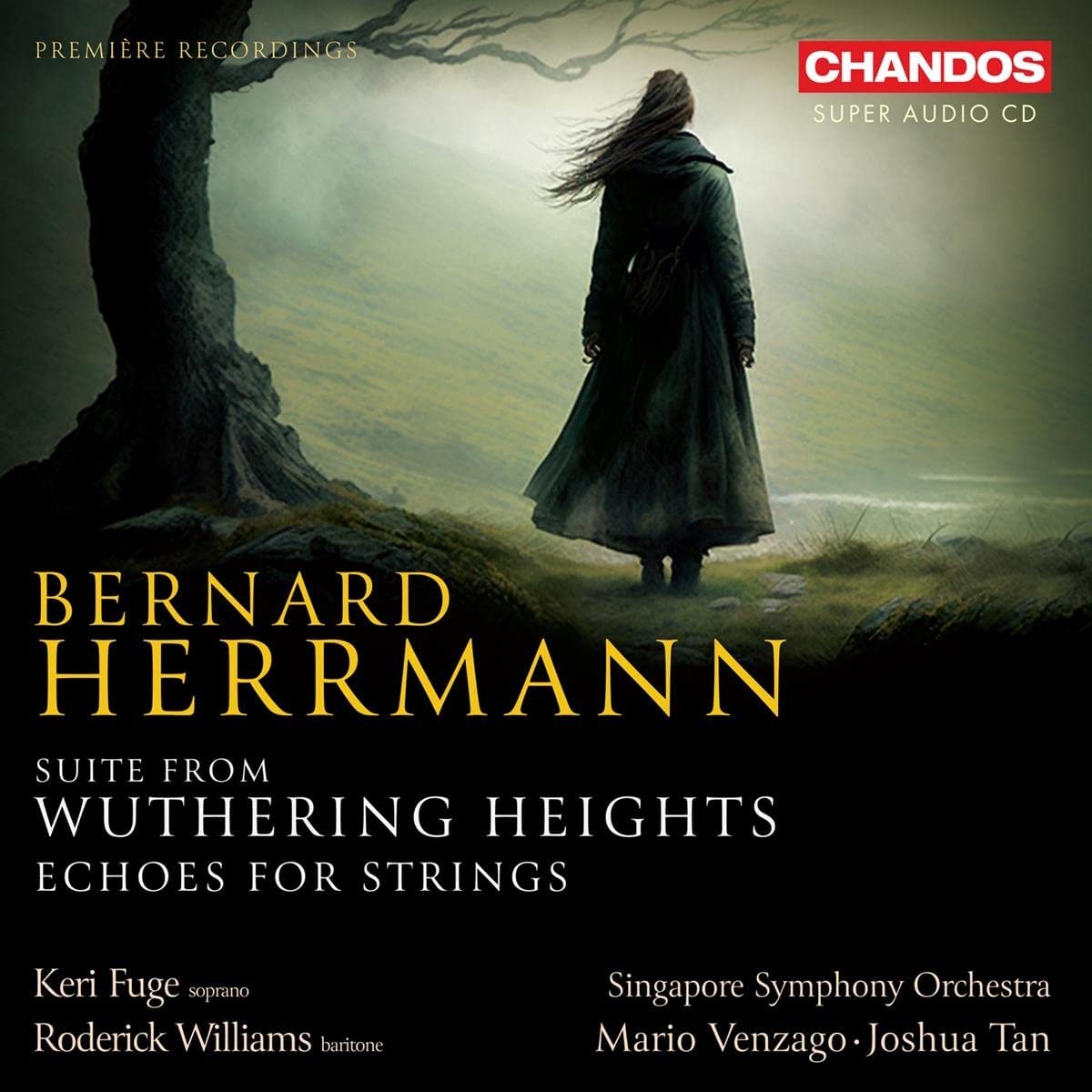
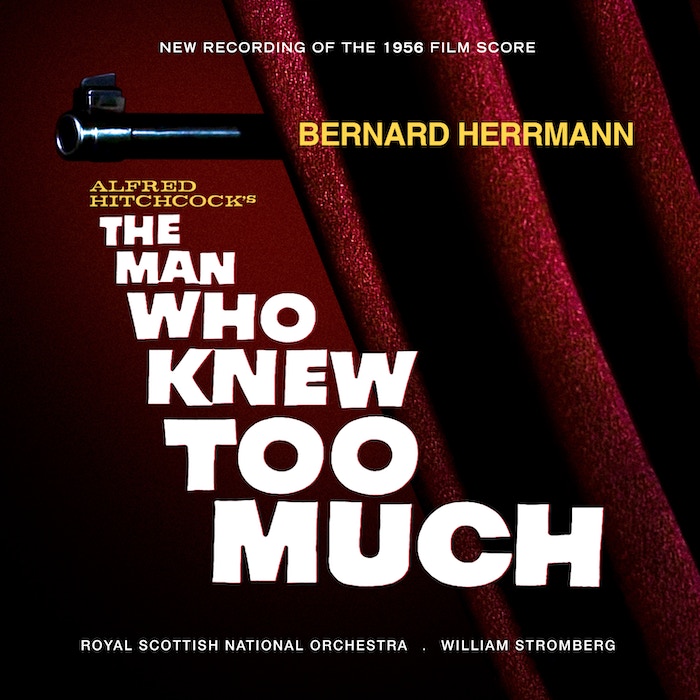
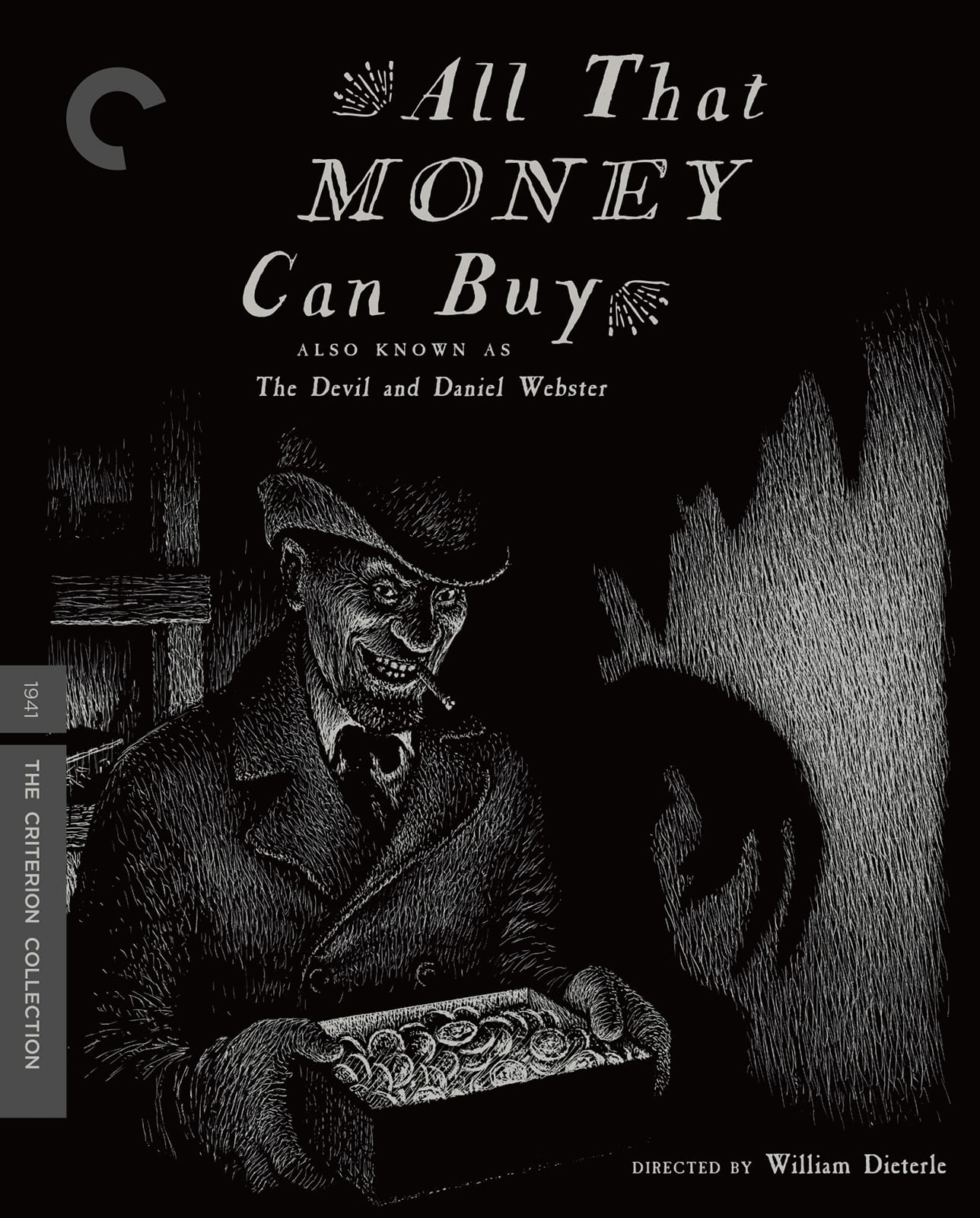
![The Man Who Knew Too Much – 4K restoration / Blu-ray [A]](http://www.bernardherrmann.org/wp-content/uploads/2023/11/TMWKTM-4K.jpeg)
![The Bride Wore Black / Blu-ray [B]](http://www.bernardherrmann.org/wp-content/uploads/2023/07/BrideWoreBlack.jpeg)
![Alfred Hitchcock Classics Collection / Blu-ray [A,B]](http://www.bernardherrmann.org/wp-content/uploads/2020/07/AHClassics1.jpg)
![Endless Night (US Blu-ray) / Blu-ray [A]](http://www.bernardherrmann.org/wp-content/uploads/2020/03/EndlessNightUS.jpg)
![Endless Night (UK Blu-ray) / Blu-ray [B]](http://www.bernardherrmann.org/wp-content/uploads/2019/12/ENightBluRay.jpg)
